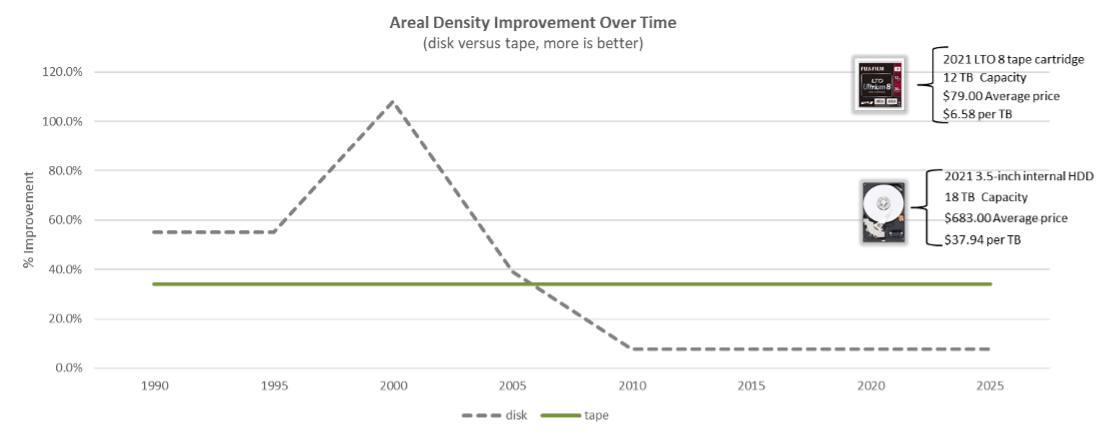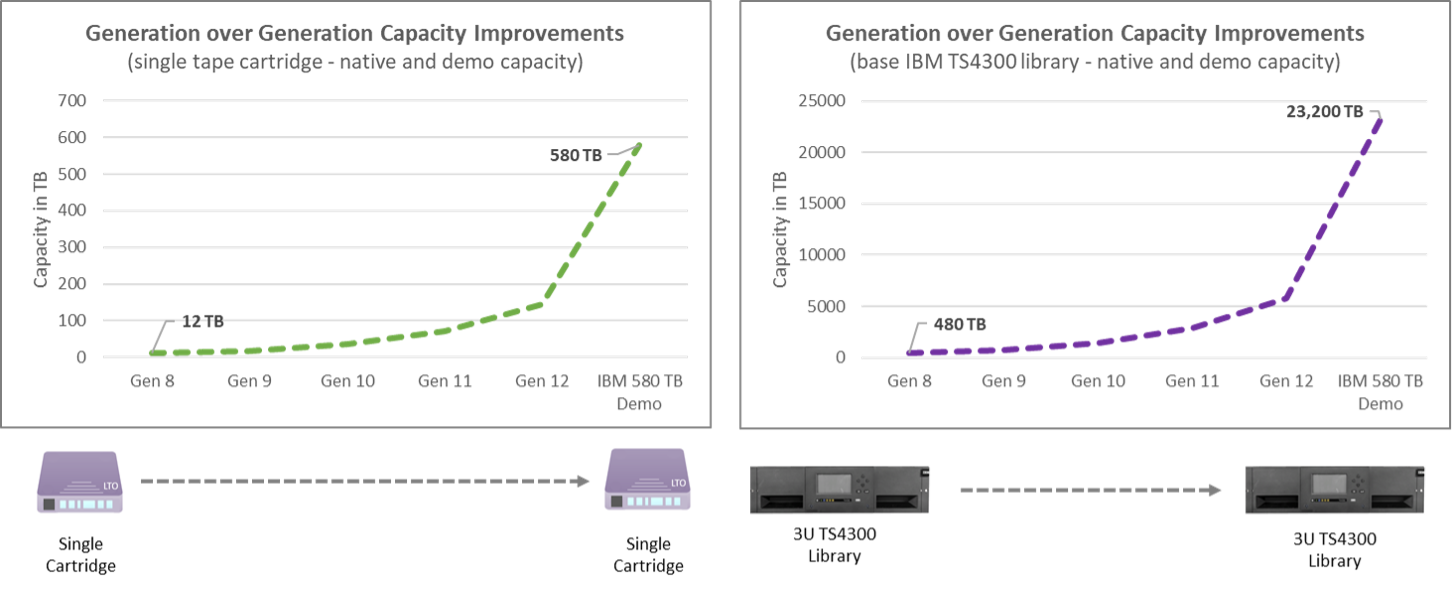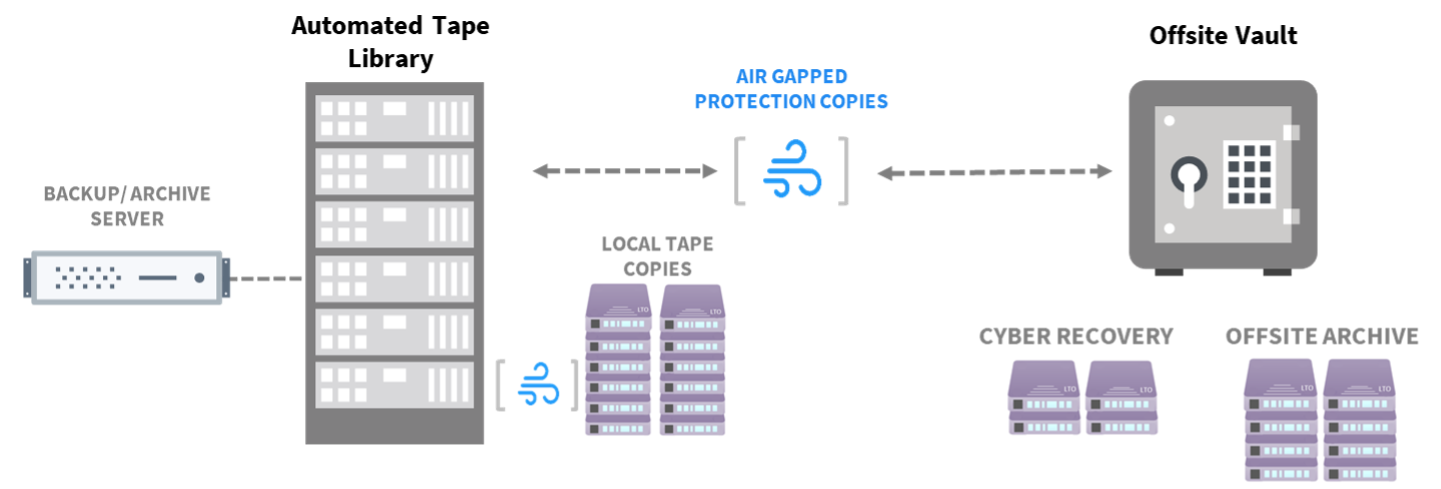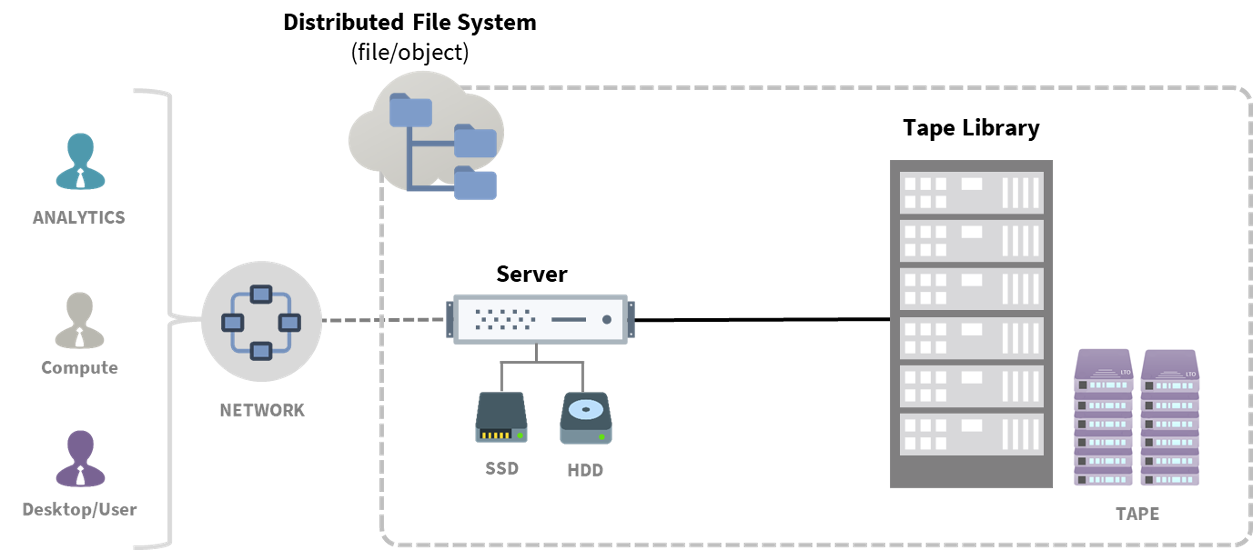
Brought to you by:
Enterprise Strategy Group | Getting to the Bigger Truth™
ESG WHITE PAPER
How Tape Technology Delivers Value In Modern Data-Driven Businesses
IBM and Fujifilm
By Vinny Choinski, ESG Senior Analyst; and Christophe Bertrand, Senior Analyst
SEPTEMBER 2021
Introduction
This ESG White Paper focuses on exciting, new advances in tape technology that are now positioning tape for a critical role in effective data protection and retention, as we have now officially entered the zettabyte age of storage. Organizations are challenged with the overwhelming amount of data being created, as well as TCO, energy consumption, cybersecurity threats, scalability, reliability and how to effectively protect all of the company data. Tape, in many cases, is the answer to these challenges and the last line of defense against cyber-attacks. Tape technology can play a major role in any organization’s data protection and storage strategy.
In a recent ESG research survey, ESG asked participants what benefits they realized from using tape technology. The two most common benefits identified were proven reliability (46%) and proven security (44%) (see Figure 1).1 These benefits represent some of the core values of tape as a part of any data lifecycle management program. Tape has always been viewed as a reliable solution since its creation in 1952, when one reel could hold about 2MB of data, up to today with a single cartridge capacity of 20.0 TB. The ability to isolate tapes offline delivers a strong security component of cyber resiliency when implemented properly. Total cost of ownership, better storage efficiency, and better media longevity when compared with alternatives all ranked very high with ESG research respondents as business benefits of using tape as a data protection and retention technology. The long-term value is extremely high, as the cost for management is low and life expectancy exceedingly long. Tape has been on a steady path of increasing capacity and continues to promise dramatic future capacity increases with the recent announcement by IBM and Fujifilm. Now, the two firms together have demonstrated their ability to meet or exceed capacity roadmaps with their groundbreaking 580TB technology.
Figure 1. Top Seven Benefits of Tape Technology
What are the benefits your organization has realized as a result of using tape technology? (Percent of respondents, N=303)
Source: Enterprise Strategy Group
Although tape is a very mature technology, it has continued to improve and remains a cost-effective way of retaining large amounts of data at less than a penny per gigabyte. It also helps that tape has proven to be readable for many decades and offers the advantage of implementing a physical barrier thanks to the ease of removability and portability not easily achieved by other storage solutions. Furthermore, stealing data stored on tapes would mean actually stealing the physical tapes and having access to the right equipment to read them.
New Technology Overview
Figure 2. Areal Density Improvements
Aeral Density Improvement Over time
(Disk versus tape, more is better)

Source: Enterprise Strategy Group
Hyperscalers’ Influence on Modern Data Center Architectures
Infrastructure Enhancements
Figure 3. Enhancing Infrastructure Lifecycle

Source: Enterprise Strategy Group
Use Cases
Figure 4. Data Protection, Archive, and Resiliency

Figure 5. Intelligent Data Management

The Bigger Truth
Say Hello to Modern LTO
This ESG White Paper was commissioned by IBM and Fujifilm and is distributed under license from ESG.
1 Source: ESG Research Report, Tape’s Place in an Increasingly Cloud-based IT Landscape, Jan 2021.
All trademark names are property of their respective companies. Information contained in this publication has been obtained by sources The Enterprise Strategy Group (ESG) considers to be reliable but is not warranted by ESG. This publication may contain opinions of ESG, which are subject to change from time to time. This publication is copyrighted by The Enterprise Strategy Group, Inc. Any reproduction or redistribution of this publication, in whole or in part, whether in hard-copy format, electronically, or otherwise to persons not authorized to receive it, without the express consent of The Enterprise Strategy Group, Inc., is in violation of U.S. copyright law and will be subject to an action for civil damages and, if applicable, criminal prosecution. Should you have any questions, please contact ESG Client Relations at 508.482.0188.

Enterprise Strategy Group | Getting to the Bigger Truth™
Enterprise Strategy Group is an IT analyst, research, validation, and strategy firm that provides market intelligence and actionable insight to the global IT community.
